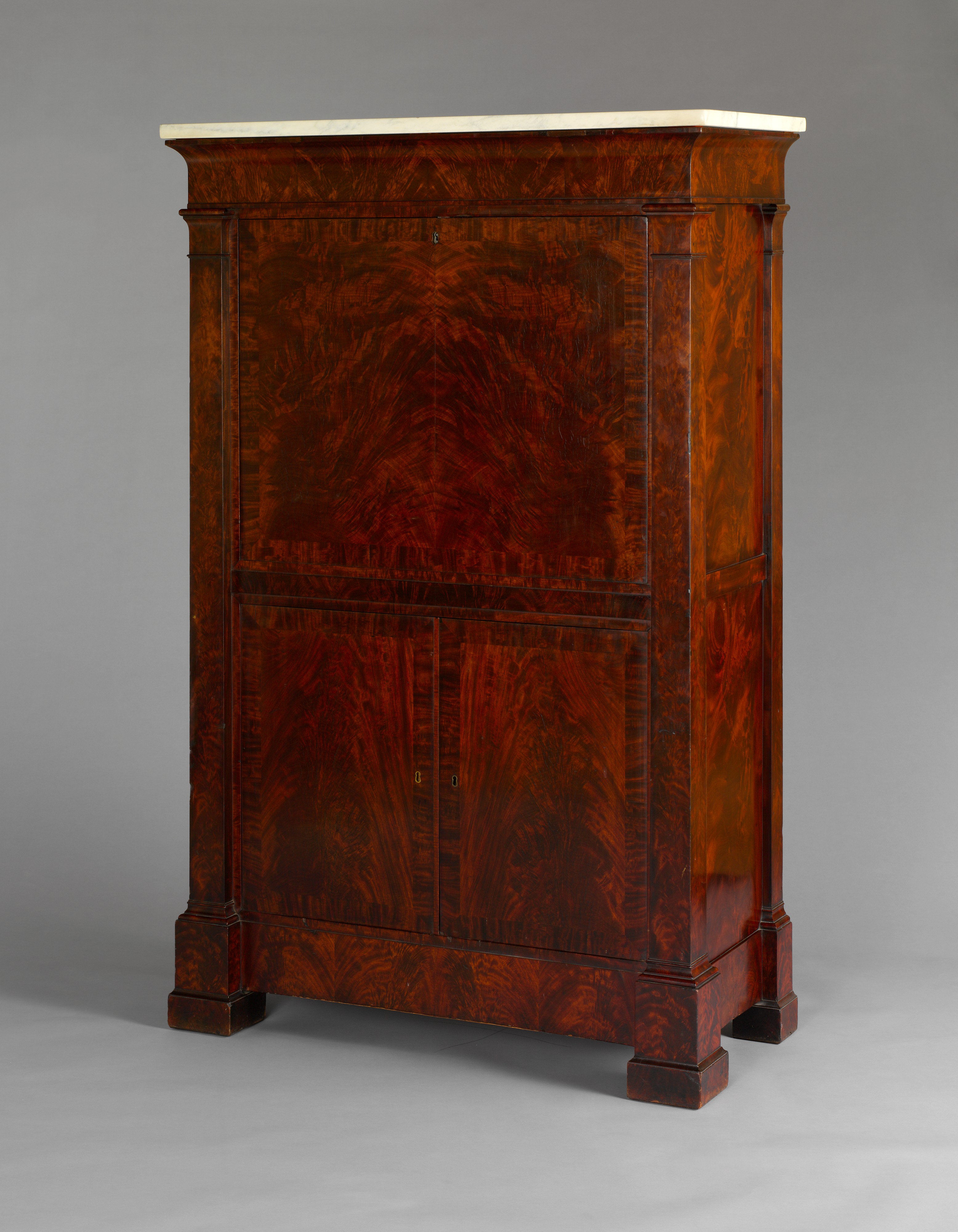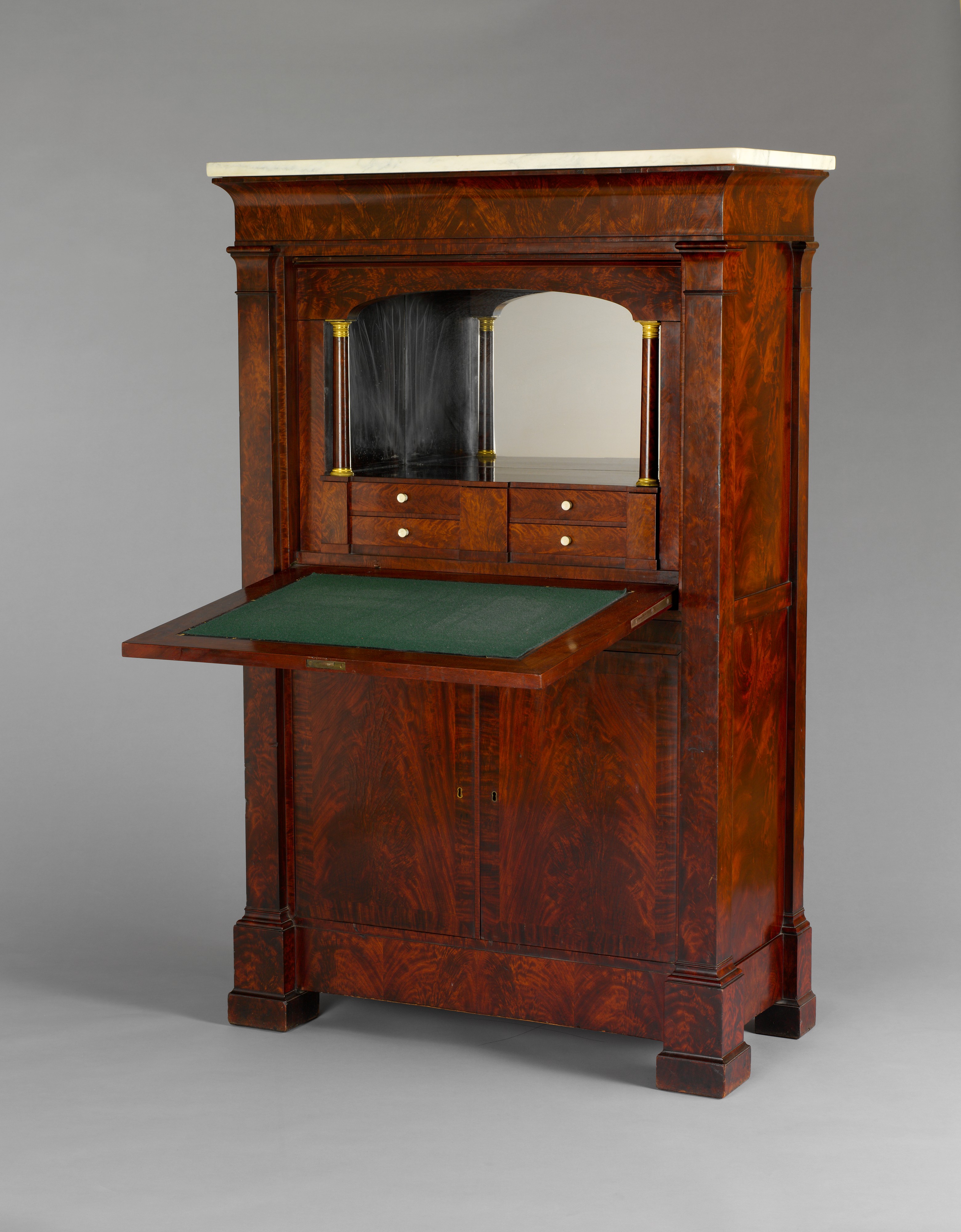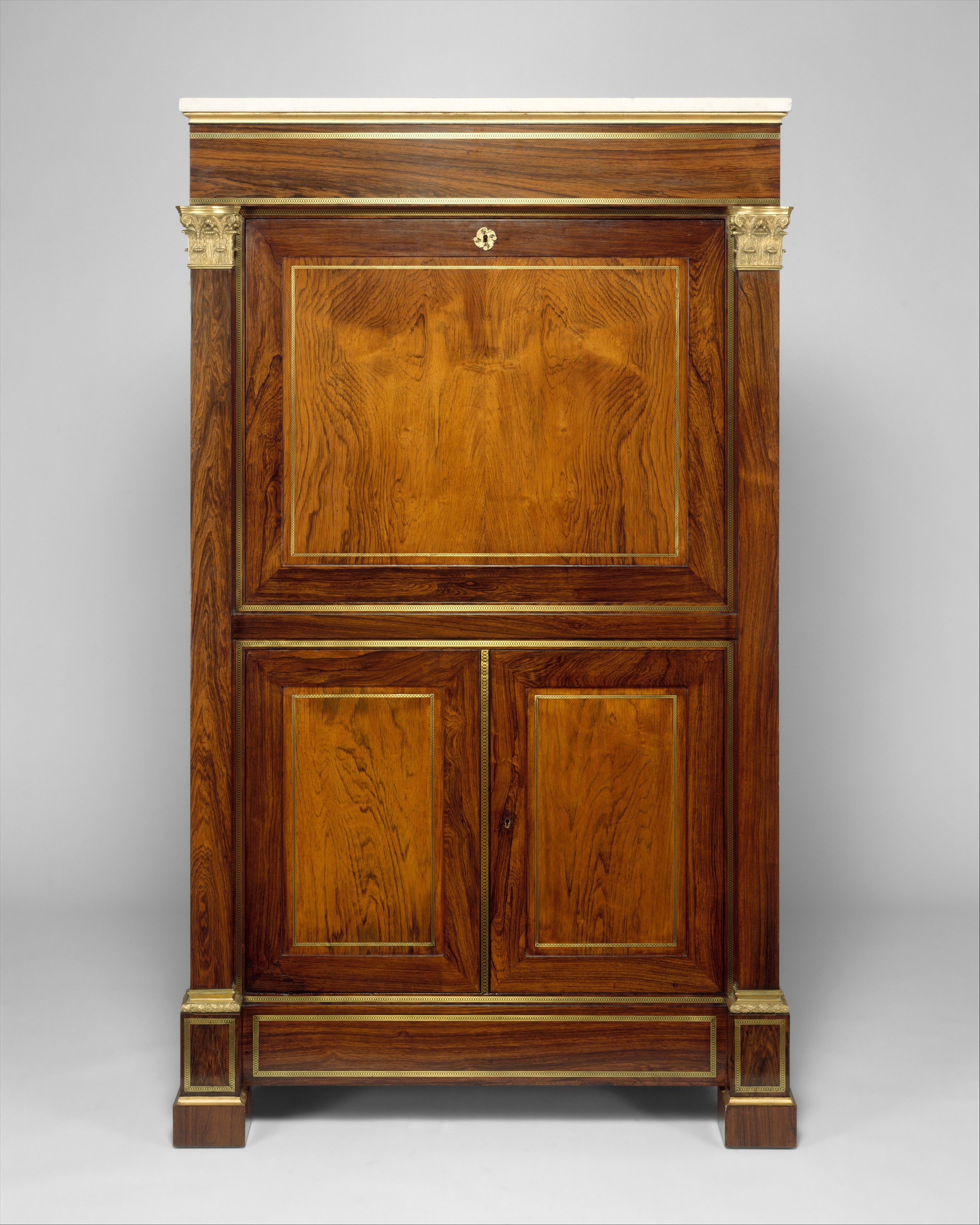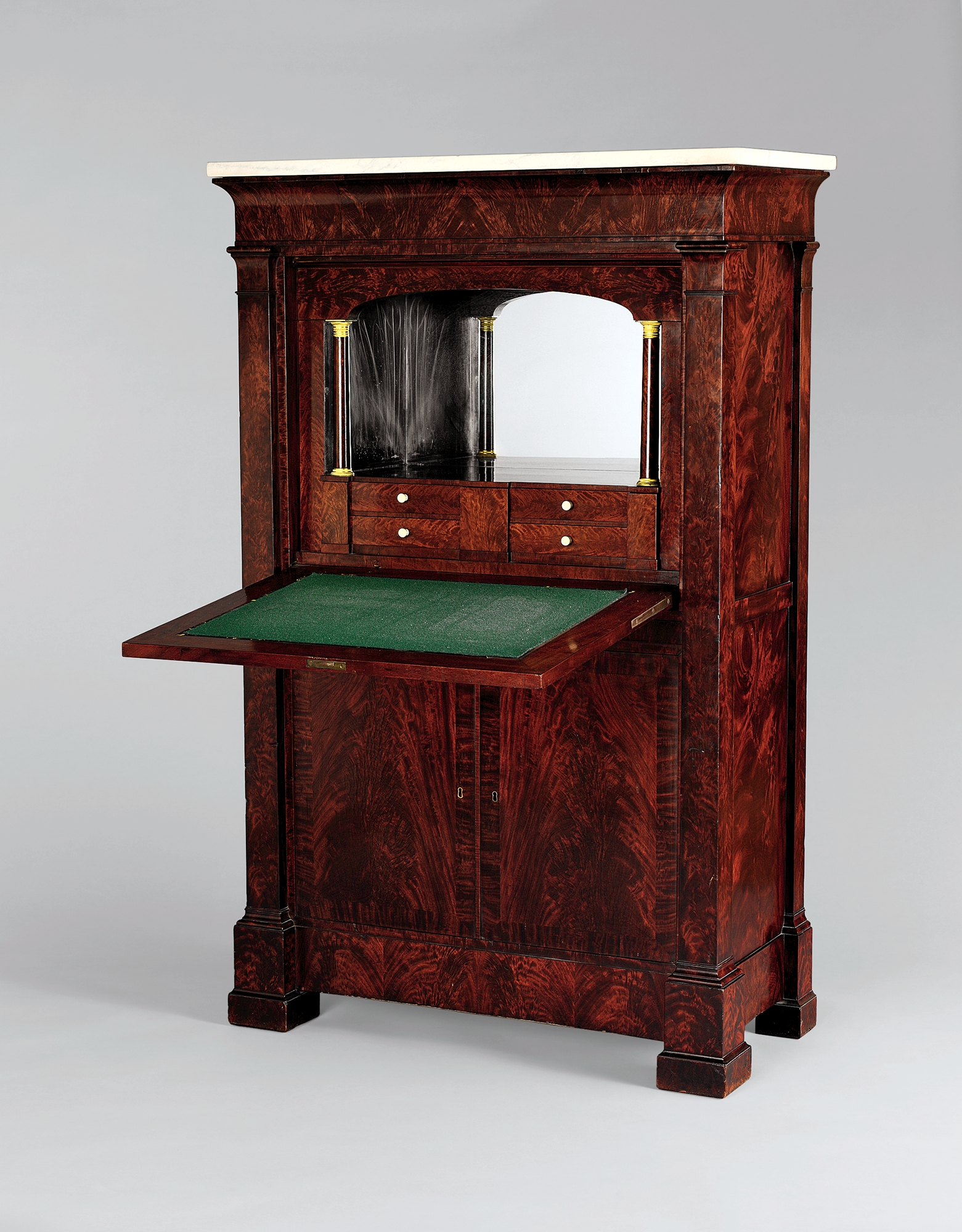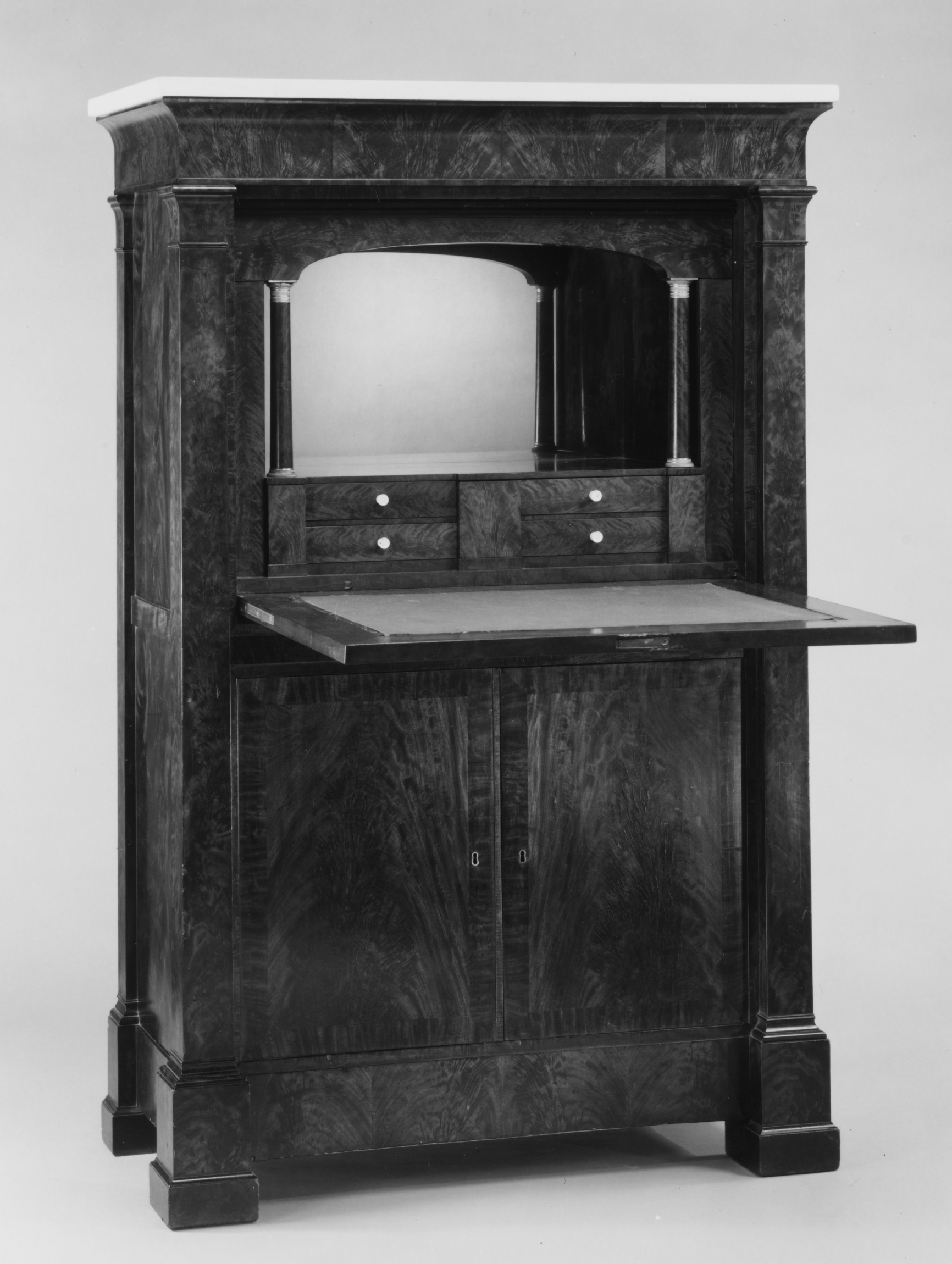Secrétaire à abattant
Attributed to the Workshop of Duncan Phyfe American, born Scotland
or attributed to D. Phyfe & Son American
or attributed to Duncan Phyfe & Sons American
The rippling figure of mahogany veneers sheaths the Classically inspired columnar supports and architectonic mass of this secrétaire à abattant, or "French secretary" according to the 1834 New York cabinetmakers’ price book. In the 1830s and 40s, the Phyfe workshop embraced the revival of Grecian designs and use of flashy veneering techniques popularized by their French counterparts. The Phyfe workshop produced very few secrétaires but may have based this form on number 368 of volume one (1813-1815) in Pierre de La Mésangère’s Collection de Meubles et Objets de Goût (1820–1831). The secrétaire employs sophisticated hardware such as spring-locked drawers for the safekeeping of valuables and a drop-fron with a weighted iron balance hinge.
Due to rights restrictions, this image cannot be enlarged, viewed at full screen, or downloaded.
This artwork is meant to be viewed from right to left. Scroll left to view more.



